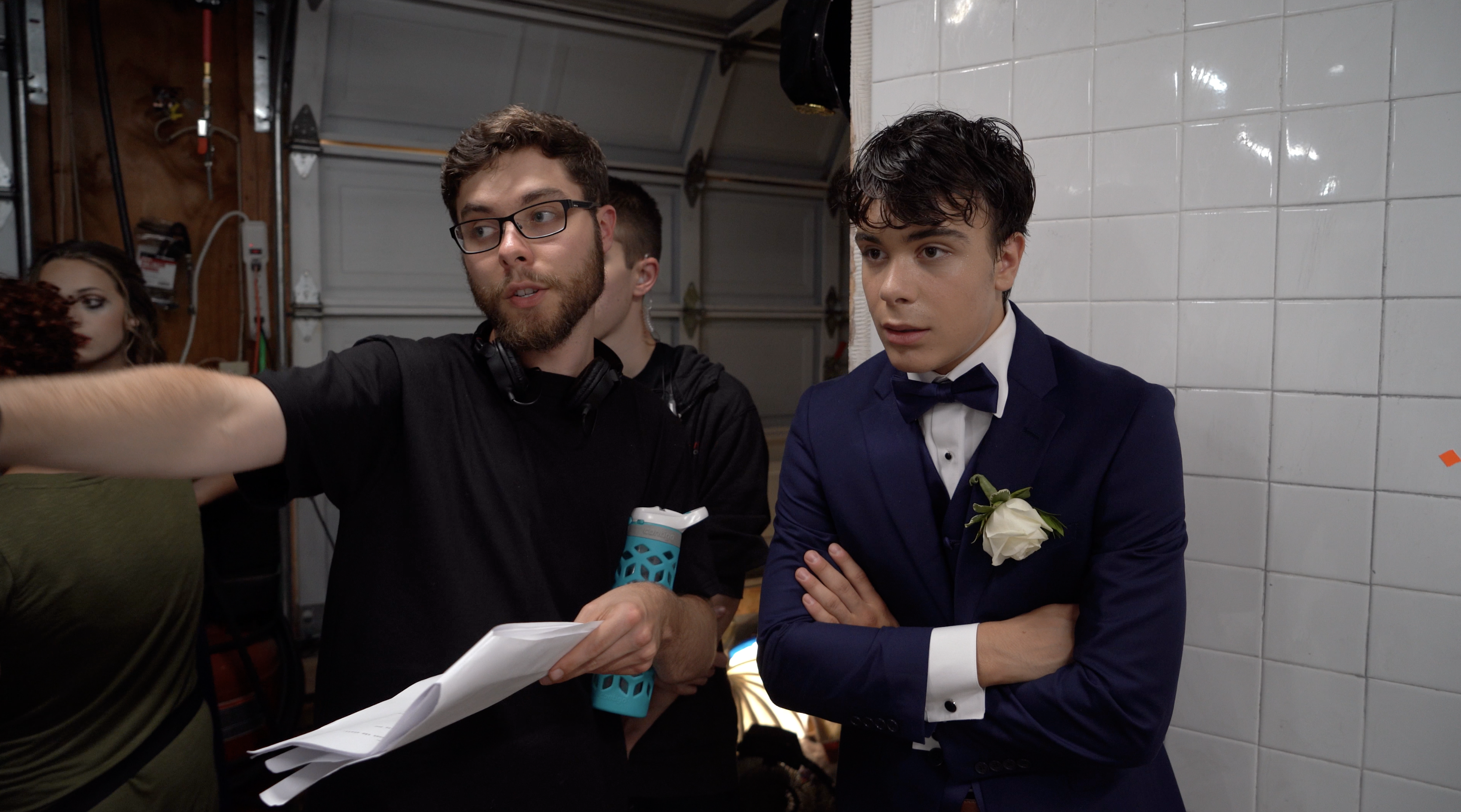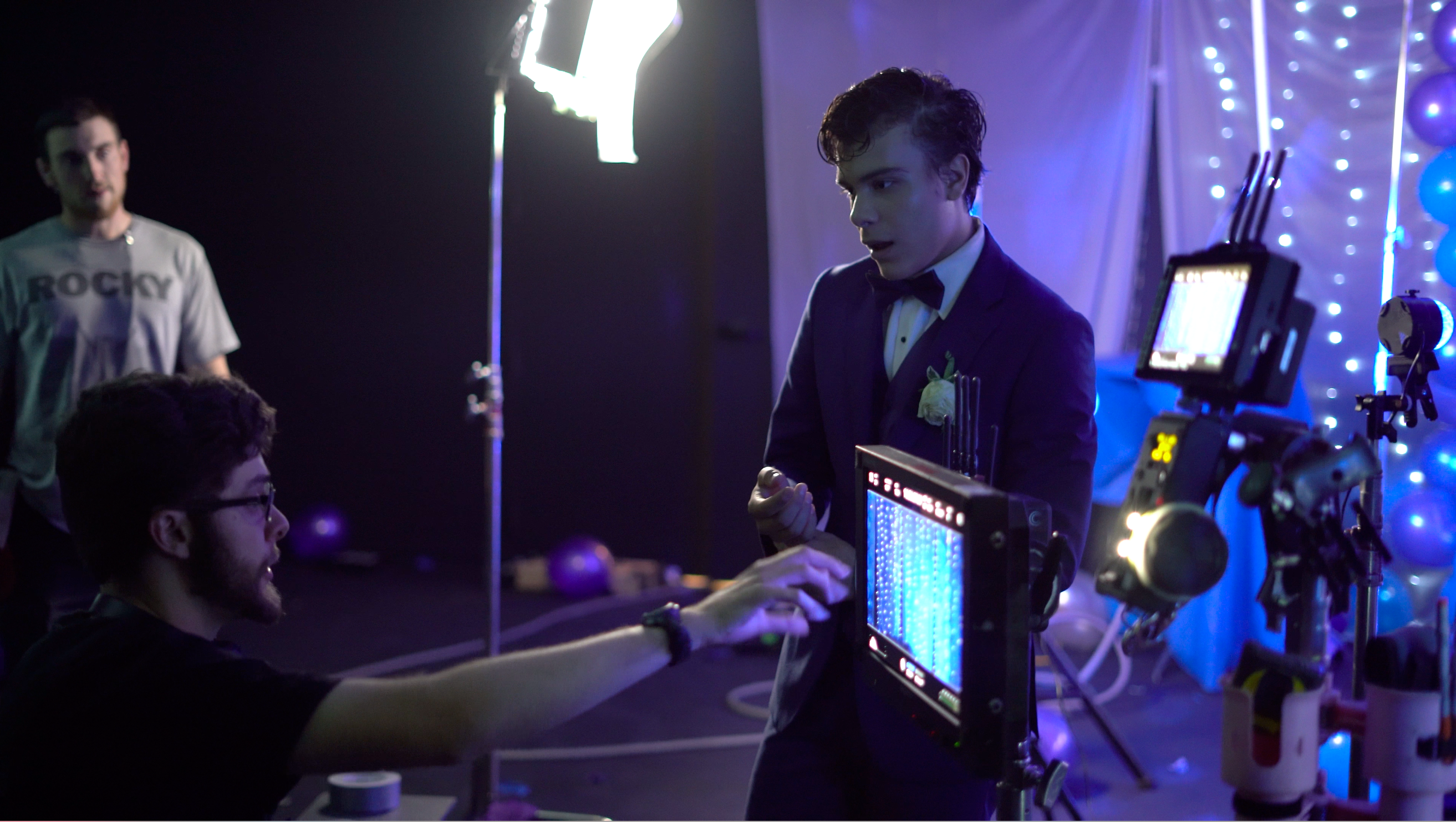Interview With Miles Levin, Writer-Director of Award-Winning Epilepsy Film, Under the Lights
In celebration of our upcoming virtual streaming event of Under the Lights, an award-winning 10-minute movie about the life of a boy with epilepsy who wants to go to prom, we sat down with writer-director Miles Levin to learn more about his vision for the film and its efforts to bring visibility to the epilepsy community. By using film as a creative vehicle to overcome epilepsy stigma, Levin’s film sheds light on the power of cinema to affect social change and build a community of epilepsy allies.
Starring Pearce Joza as Sam, Alyssa Jirrels as Molly, and also featuring Greg Grunberg, Jenifer Coté, and Nicole Jordan-Webber, this film is a story you haven’t seen before.
Join us for a special digital screening of the film on November 19 at 4–4:30 p.m. PT by RSVPing for free tickets, and be sure to stick around afterward for a special live Q&A with Miles Levin himself!
1) There are many stories one can tell about the lives of people with epilepsy. When writing the Under the Lights, why did you decide on Sam and prom as your character and setting?
To me, the experience of having a disability is the experience of feeling left out. It’s watching other people do stuff you would give anything to do. Everyone, at some point, with or without a disability has experienced this. I chose prom as a setting because it’s a moment most people can relate to, where we pine to be included, noticed and wanted. I want to meet the general public in a place and time that they recognize.

2) The movie is quite a production with Disney stars and Star Wars producers. How did the movie come about, from script to its final release?
I wrote the film after the 2017 fires. In being involved in the Epilepsy Foundation of Northern California for many years, I eventually told them that we had to try something new. Year after year, and this goes for other foundations too, we hold plenty of awareness campaigns, but they are almost exclusively attended by people with epilepsy or people who are there to support those patients. To actually fight stigma, you have to get people in the room who have no reason to be there. Cinema is just about the only place in our culture where people leave the house specifically to see something or someone they haven’t seen before. There is hunger to hear new stories.
The LGBT community, for instance, has had enormous success on this front to the degree that there are Oscar-qualifying film festivals that only show LGBT content. They’ve built a culture around it. They fought for their place in the conversation by going to the places where the public wants to hear from them. We need to do the same. It’s hard to go back to your neighbor being hateful if you’ve felt something for someone like them. We can replace “epilepsy, oh god” with “hey, I’ve heard something about that!” In order to end stigma, the epilepsy community must make films. And not sad PSAs. Relatable stories that invite the public to be a part of our world.
3) As you mentioned, epilepsy is often inaccurately depicted in most Hollywood movies. What are the dangers, and how can we as audiences help fight stigma with cinema?
The fact is that most people are good people. They react to things they don’t understand with fear, or by bullying because they have nothing else to work off of. That’s in our genetics. So obviously if the only time you’ve seen a seizure is in an exorcism movie or a hospital show, you’re going to react just like that. The most striking thing about making the film, to me, was that people without epilepsy did not have to be convinced to be a part of this. They wanted in. They saw that this mattered. Most people are like that. We have to present our stories with pride and confidence. That’s something everyone wants to be a part of.
I’m hoping that the film will encourage other people with epilepsy to share their own stories and to be proud of them. That proliferation is how we replace stigma altogether. Consider that Alzheimer’s affects fewer people but is featured almost nonstop, in some capacity, in any TV show or movie about an old person. When you start to be represented in media as often as your diagnosis does in real life, stigma will evaporate.
Alyssa Jirrels, who plays Molly in the film, used to live near my home town, and a former teacher recommended her to me, showed her the script, and she loved it. I had seen her work and absolutely had to have her. She was exactly what I had in mind. So I sent her a video pitch and crossed my fingers. I had a lot of trouble casting the main role of Sam because it’s so physically and emotionally demanding. It had to be an emotional home run or else I was going to fail my mission of providing the community with something authentic and real. I auditioned many actors, but finally I went to Alyssa and said, “Hey, is there someone you work well with?” because these actors were going to have zero time to get to know each other. She had a long history with Pearce Joza through Disney and sure enough he was perfect for the role. He did an enormous amount of research, cared a great deal about the community, and became an epilepsy advocate in his own right.
Greg Grunberg came on when I talked to Ken Lowenberg from Talkaboutit.org. Ken showed Greg the pitch and he loved it. He actually plays the 911 operator in the film if you pay close attention.

4) What is one takeaway you’d like audiences who aren’t familiar with epilepsy to gain from the film?
The film is designed, on purpose, not to say, “And then everything was fine.” I want audiences to pick up on the fact that all we are asking for, as a community, is a hand. Just to be there. Safety presentations and PSAs have their place, but I really think the way to reach people and get them on our side is to give them that one statement. Just be there. It’s ok if you’re nervous. We are too. Just be there.
5) Finally, is there anything else you’d like to tell the audience before they see the movie?
We are MAKING THE FEATURE LENGTH FILM! We are reaching higher and we are going to break into mainstream conversation, but we really need allies. It can’t happen without an army. If anyone thinks they can help, please please reach out on the website and definitely subscribe to our newsletter, which can be found on www.underthelightsfilm.com.





